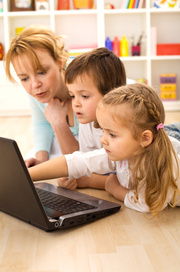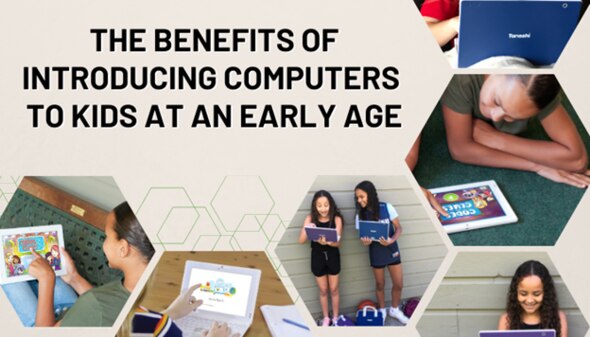Building Effective Study Habits: A Guide From Tolulope Oluwakorede Adetayo
Do you struggle to stay organized regarding your studies and assignments? Building effective study habits can help ensure success in school. With the proper set of skills, navigating your academic load will become much more straightforward.
Tolulope Oluwakorede Adetayo shares her guide to building efficient study habits to make studying more manageable and productive.
Identify Weak Areas To Improve On
The first step to building better study habits is identifying which areas to work on. Do you have trouble staying organized? Are you unable to focus for extended periods? What are your weaknesses when it comes to studying? Identifying these areas early will help you plan to improve them.
Identifying one’s weaknesses can be difficult but essential for personal growth. It takes courage to acknowledge areas needing improvement, but the first step in overcoming weaknesses is recognizing and accepting them. Once identified, setting specific, measurable goals is crucial in improving. The goals should be realistic and challenging, with a defined timeline.
Tracking progress is vital to staying motivated and holding oneself accountable. Celebrating small accomplishments along the way will encourage you to keep striving toward the end goal. With dedication and persistence, weaknesses can become strengths.
Create A Schedule
Creating a schedule that sets aside time for studying and other vital areas of collegiate life is essential to an organized and productive academic experience. It can be challenging to balance the demands of school with personal needs, but having a plan in place ensures that all aspects of life are given attention. A successful study schedule will help you stay on track while allowing time for activities outside of academics.
When creating a schedule, it’s essential to consider how much time is needed each day for studying, exercising, socializing, or relaxing. Start by setting realistic expectations about what you can accomplish each day and create a timeline accordingly. Make sure to set aside enough hours for sleep; getting adequate rest is critical to being able to focus during class and study sessions. Break down large tasks into smaller chunks, so they seem more manageable; this also helps prevent procrastination.
Additionally, try scheduling breaks between tasks so your brain isn’t overloaded with information at once. Finally, ensure your study environment is conducive to learning; find out if there are any quiet places on campus where you can do your work without distraction or interruption from others around you. By following these steps when creating a schedule that balances studying with other
Create A Designated Study Space
Having a designated space to study is just as important as creating a schedule. Finding the right spot can make learning more efficient and enjoyable. It doesn’t have to be an elaborate setup; even having one corner of your room or a desk in the library can be enough. The most important thing is that it should be free from distractions and provide a sense of comfort.
When deciding on a spot, ask yourself if the environment is conducive to learning. If noise from outside or other people in the area will be distracting, finding another place is best. It should also be easily accessible, somewhere you can go without much effort. Once you have a designated spot, make it your own. Bring items that motivate and inspire you while studying, such as plants or pictures of family and friends.
Having a space exclusively for studying makes transitioning into “study mode” easier each time you go there. It also helps create boundaries between academic tasks and the rest of life. Even something as small as seeing your designated study space can help shift your mindset and prepare you for a productive session. Having a dedicated space to work makes it much easier to stay organized, focus, and reach academic goals.
Break Tasks Into Manageable Goals
It can be overwhelming when looking at a mountain of material to learn or assignments to complete, but breaking tasks into smaller goals makes them feel more manageable. Working on one task at a time and setting mini-deadlines helps keep you focused and motivated. It also prevents procrastination while ensuring enough time for each subject or assignment.
Start by creating a to-do list and rank tasks according to priority. Work on the essential items first, then move down the list once complete. After each goal is finished, take a short break to clear your mind before transitioning to the next task. Rewarding yourself after completing a challenging or tedious project is also beneficial.
Breaking tasks into smaller goals makes them less daunting and prevents burnout. It also helps keep you accountable for your progress, allowing you to track the amount of work that has been completed. Finally, it allows you to celebrate small successes instead of waiting until everything is finished. Keeping goals specific and manageable ensures success in all aspects of academics.
Final Thoughts
Tolulope Oluwakorede Adetayo understands that studying effectively requires careful planning, dedication, and discipline. Creating a schedule that balances studying with other activities, such as exercising, socializing, or relaxing, is essential for success.
Additionally, having a designated study space helps keep you organized and motivated while tackling your tasks. Finally, breaking down large goals into smaller chunks makes them more manageable and achievable. Following these steps will ensure a productive and successful academic experience.





 Reading does not have to be for academic purposes – you should encourage reading for pleasure and help foster a lifetime passion for reading.
Reading does not have to be for academic purposes – you should encourage reading for pleasure and help foster a lifetime passion for reading.






 Explore the Safe Search Engine -
Explore the Safe Search Engine -